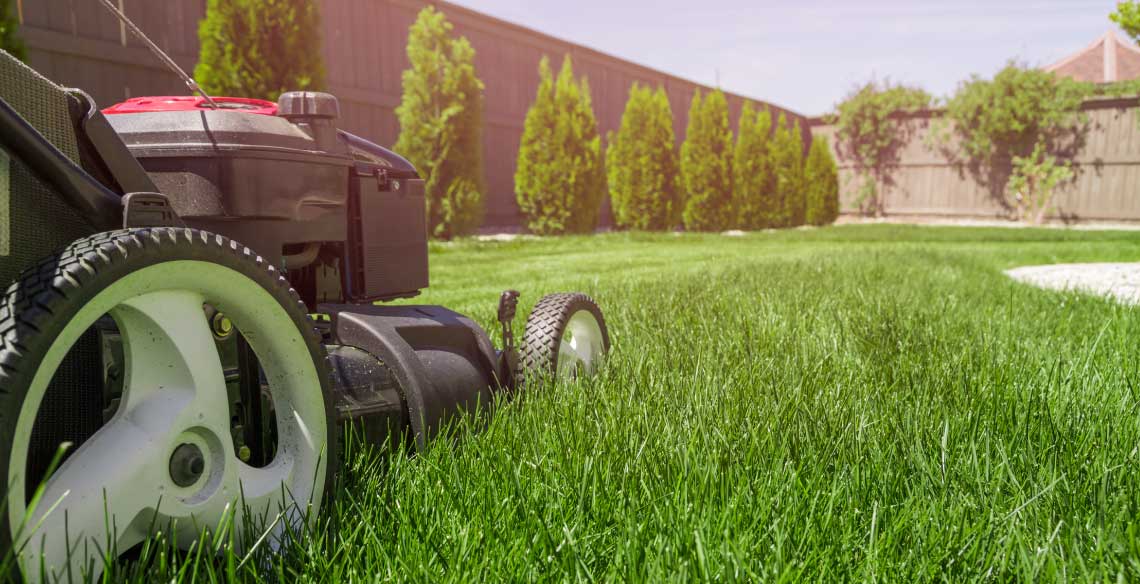With so many people moving to the Valley from the Midwest and East Coast, it’s no surprise these transplants crave the look of the lush, green lawn they remember from their hometowns. But putting in a lawn and keeping it green in the Sonoran Desert takes some extra work, including the annual ritual of planting a winter lawn.
Grass basics
Bermuda grass is one of the most common turf grasses used by Phoenix area homeowners. With proper care (and lots of watering), this hearty grass holds up to Arizona’s extreme summer temperatures. But unfortunately, in the cooler months of late fall and winter, Bermuda goes dormant, leaving a brown patch of grass many homeowners find unappealing. The solution – planting winter ryegrass that flourishes during our cooler winter temps.
According to the experts at The University of Arizona College of Agriculture and Life Sciences, typically the right time to plant winter grass is mid-October to mid-November when daytime temperatures are 80-85 degrees Fahrenheit and evening lows are around 55 F. Here are some more winter lawn tips from the experts at the UofA:
Prepping the Lawn
- 30 days before overseeding, stop fertilizing Bermuda grass.
- Two weeks before overseeding, decrease irrigation by 30 percent and raise the height of your mower by 30-40 percent.
- Two days before planting winter ryegrass, stop watering and cut the lawn at your mower’s original height.
Overseeding
- On the day of overseeding, lower your mower by 30 percent from its original height, mow the lawn and leave the clippings as mulch.
- Use about 12 to 15 pounds of ryegrass seed per 1,000 square feet for proper coverage.
- During the first seven to 10 days, water the lawn about three times per day to keep the seedlings moist.
- After about 14 days, fertilize the lawn and begin mowing once the ryegrass reaches about three inches in height.
Hire a professional
If all of the planning and prepping for a green lawn seems like too much work, you do have options, like hiring a service. According to AMS Landscaping, a Glendale-based company, you’ll pay about $300 for a turf area of 2,000 to 3,000 square feet. That price includes cutting the grass prior to seeding, applying the ryegrass seed, resetting irrigation timers, and returning about two weeks after planting to adjust the watering schedule and add more seed if needed.
‘Go green’ & skip the winter lawn
Since we live in the desert, conserving water is an important consideration, and maintaining a lawn can be expensive. According to Water Use It Wisely, a conservation campaign sponsored by several Phoenix-area municipalities, it takes more than 8,000 gallons of water for every 1,000 square feet of grass to maintain a winter lawn. Not surprisingly, Water Use It Wisely, offers these reasons for skipping the winter lawn:
- Save time, money and water.
- Preserve water quality by limiting the use of fertilizers and pesticides.
- Save landfill space from grass clippings.
- Reduce noise and air pollution caused by mowers and other lawn equipment.
By skipping a winter lawn, you’ll have to live with a brown patch for a few months, but your wallet and the environment will thank you.
Artificial turf: low-maintenance, year-round green
More homeowners are turning to artificial turf as an alternative to maintaining a green lawn in Arizona’s harsh climate. Advances in artificial turf have resulted in products with beautiful textures and color variations that may fool the most discerning eye.
According to home improvement website HomeAdvisor, it costs between $2,300 and $4,700 to install artificial turf, with the average Phoenix homeowner spending about $3,500. You can expect your turf to last 15 or more years, depending on product quality and installation.
Pros of artificial turf
- Saves water and lowers water bills
- Little to no maintenance (e.g., weeding, mowing, fertilizing)
- Soft, year-round greenery
- Doesn’t get muddy or rutted when properly installed
Cons of artificial turf
- High up-front cost
- Not easily recycled
- Heats up in direct sunlight
- If you have pets, you’ll need to periodically clean/sanitize your turf
Source: Gardenista.com
Desert landscape
In the long run, you may want to get rid of your lawn completely and replace it with a more desert-friendly landscape. Many cities, including Avondale, Chandler, Glendale, Mesa, Peoria, Scottsdale and Tempe offer residents incentives for replacing turf with more water-wise vegetation. Visit the Arizona Municipal Water Users Association website for details.
Your Turn: Tell us if you’ve decided to skip planting the winter lawn, or plan to replace your lawn with desert landscape or artificial turf. Leave a comment below.



